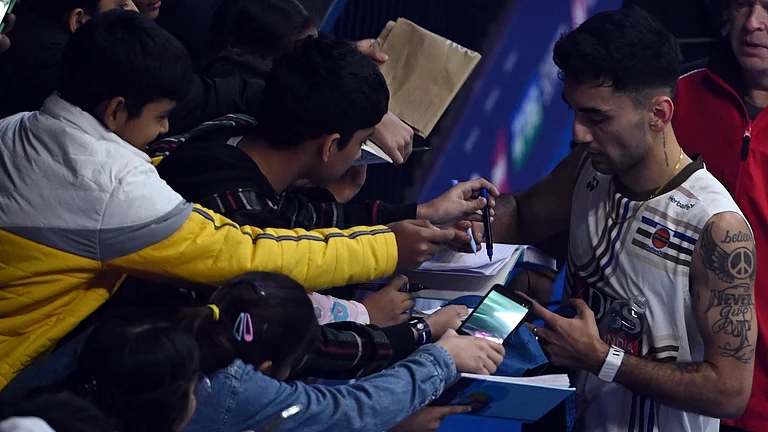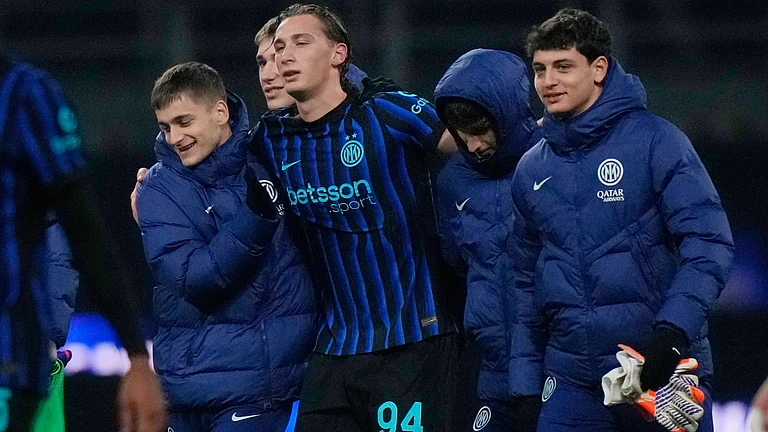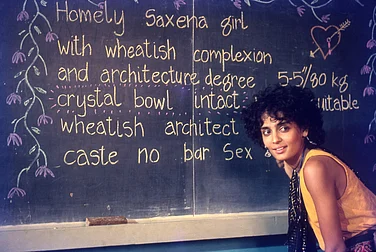“Place is security, space is freedom… What begins as undifferentiated space becomes place as we get to know it better and endow it with value. From the security and stability of place we are aware of the openness, freedom and threat of space, and vice versa.
—Yi-Fu Tuan, Space and Place: The Perspective of Experience
The freedom to stay somewhere and be someone is as important to life as the freedom to leave where and what one is. It is these liberties that determine one’s relation to a space or mode of life that one has chosen or is bound to. Caste, class and gender are some such states of being where one’s freedom to leave is curtailed. Such lack of liberty is considered all the more dire in a village, whereas the city, run by money, supposedly offers the freedom to move places and choose vocations, irrespective of one’s caste, class, religion or gender.
Girish Kasaravalli’s new film Illiralaare Allige Hogalaare (Can Neither Stay Here, Nor Journey Beyond) consists of two stories—one set in a village and the other in a city at two different points of time, with two sets of characters. These stories mirror each other to tell the story of the Indian middle class and the tectonic shift in their ethos and mindset.
The title suggests an ironic state of being, where one yearns to leave, but can’t. In the first story, there are two sets of people—those who desperately want to leave and those who are destined to stay back. The second story is more about what happened to those who left, their ‘boundedness’ to their station and place in life. All the characters are emigrants to the city and have no other place to go. At one point, when Naga’s wife playfully suggests going back to the village, he replies that in the city, he has some respect as a sales executive, but back home, he will be the same old Naga, an untouchable menial.
In the first part, we see the adolescent Naga helping his mother, who works for a Brahmin family, and at school, where his low-caste status and ‘stinking’ occupation invite ridicule. He is close to Sita, the differently abled and lonely daughter-in-law of the Brahmin house whose husband is missing. Naga is also the messenger of love between his schoolmaster, an outsider, and Sita. It is the master who first provokes him to dream, but it is the arrival of Pabbu from Bengaluru that ignites his dream of escape. A few years his senior, Pabbu had run away from the village, but now commands respect; he flaunts a camera and even the village head invites him home.
The second story is set in Bangalore around the beginning of the new millennium. The only character who links both the stories is Naga, now an executive with a software engineer wife and a daughter, Pinki. It centres around Punda, a boy who works at their home and looks after Pinki. While the village at least had the possibility of escape, the city is a trap without any exit. Not only is Punda unable to go back home to help his ailing father, he is all the more stuck after the arrival of his sister Tulsi, who is working as a maid in another house.
There is discontent and restlessness in the village and city, though of different kinds: the people in the village are are fettered financially, emotionally or socially by the place and their station in the social system, and imprisoned by caste, poverty, ignorance, beliefs, sheer inertia, or a sense of contentment, as in the case of upper-caste males. In the city, their discontent is more physical and economic rather than spiritual or social. For instance, the families of Naga and his friend Mr Rao desperately want to better their status. To achieve this, they will go to any extent—do pujas to bring peace in the house or opt for ‘American timings’. The enslavement of children like Punda and Tulsi is an inevitable part of their grand design, which they justify as a charitable act to help rural families.

The visual tone and composition of the two stories follow distinct patterns. The first features the greens and browns of the thick vegetation, the earth and water bodies as well as the dark interiors of huts and traditional Brahmin houses, though most events transpire outdoors. The second has largely interior shots, though the greys, the lights of the city and the blues of the sky also tint its palette.
There are various recurring motifs in the two—similar spaces, objects, photographs, actions and rituals that mirror each other evocatively. While the ferry takes people to and fro in the village, the bus stop in the city is a dead end for Punda. If the school is open though combative in the village, it is closed like a prison in the city. If Sita’s gift of trousers is an act of love and gratitude, the one given by Naga’s wife is a mere costume to exhibit family status. If rituals sustain families in the village, in the city, there is a mere puja to propitiate oneself. If Naga carries letters of love and longing, it is letters of despair and cries of help from home that come to Punda in the city. In both stories, there is an undelivered letter—while Naga does it out of concern for Sita in the first, ironically, the same Naga destroys a letter from Punda’s home in order to keep him in his house.
There are also rebels against the stasis in both stories: in the first, Sita’s husband had taken up arms against the system, while in the second, there is reference about Punda’s father being beaten up for organising fellow workers against the landlord. Significantly, both the rebels are invisible or outside the visible narrative world.
These stories about the lives of two adolescents in different points in time and space, together depict the transformation of the Indian middle class. If Naga is the child of post-Independence India, rural and full of hope, Punda belongs to the globalised and urbanising India of the new millennium. If the adolescent Naga is capable of making sacrifices and could put his ‘chance’ to escape on hold for the sake of Sita—it is her only and last chance to flee the village—the middle-aged Naga employs wily ruthlessness to retain Punda as his slave. Though the village was a tiny, isolated place, Naga belonged there, it offered him enough space to dream. In stark contrast, though the city is huge, it offers no place for Punda, nor will he ever belong to it. It will always remain a space that will never become a place for him.
Girish Kasaravalli’s film apparently has two straightforward, simple stories, which when read together, turn into a chilling account of the self-deceit and greed that constitute the warps and wefts, the origins and present of the Indian middle class.
(The author is a critic, curator and documentary filmmaker)

























